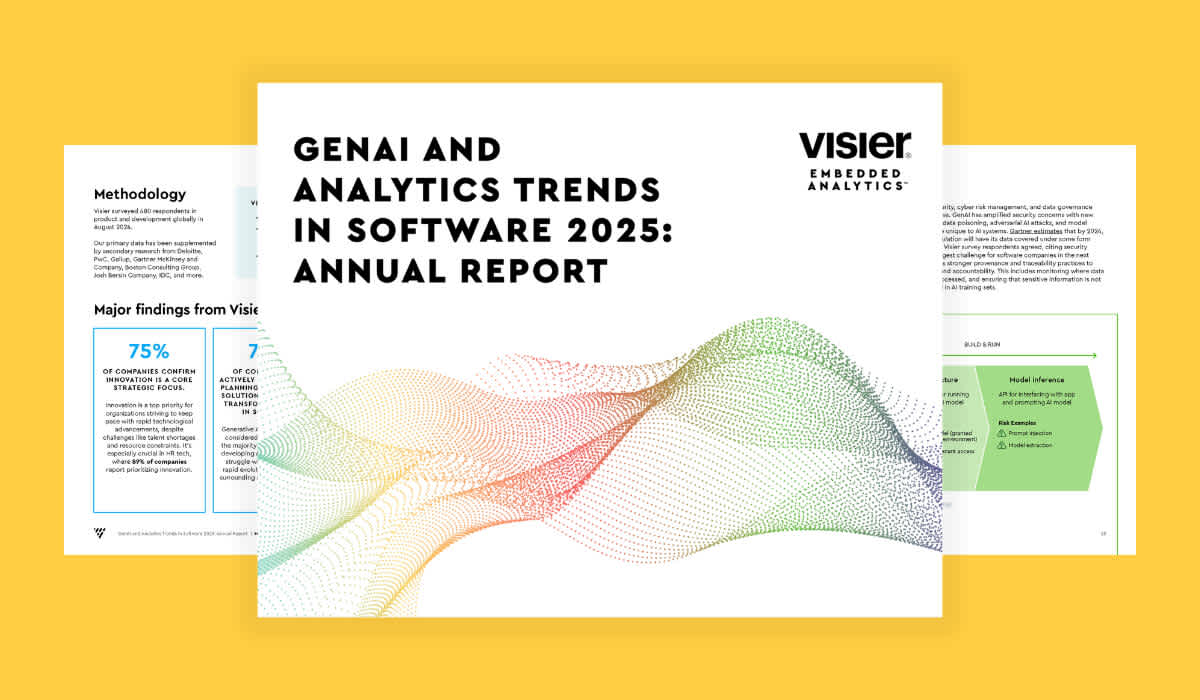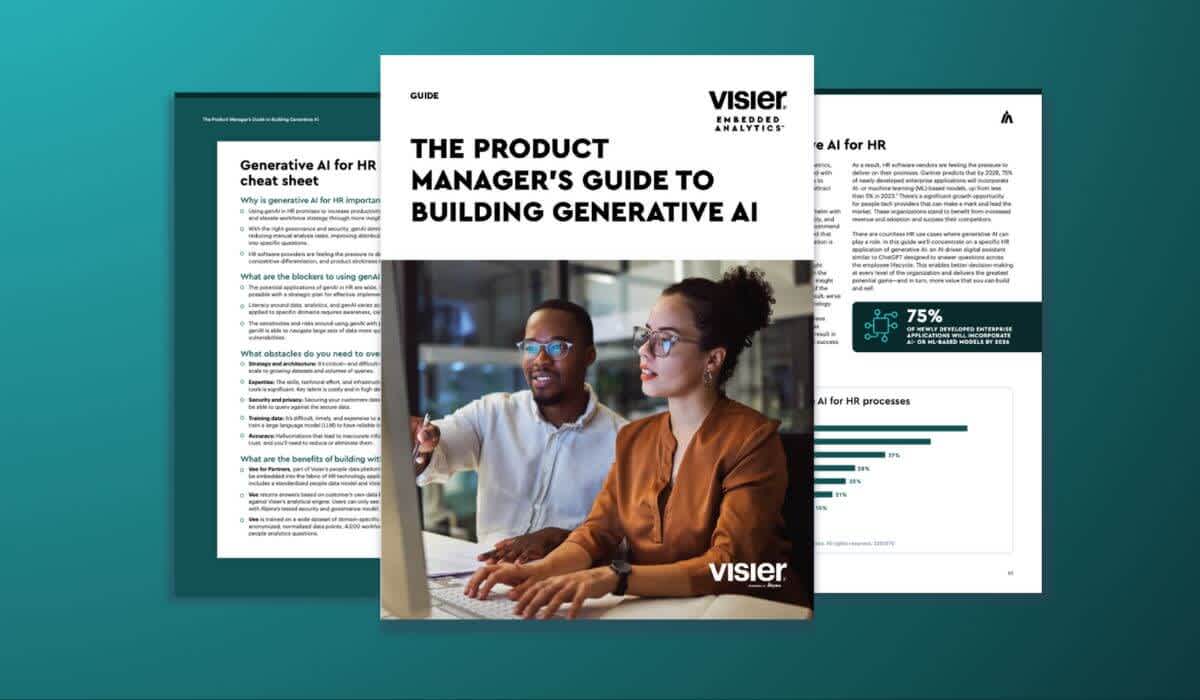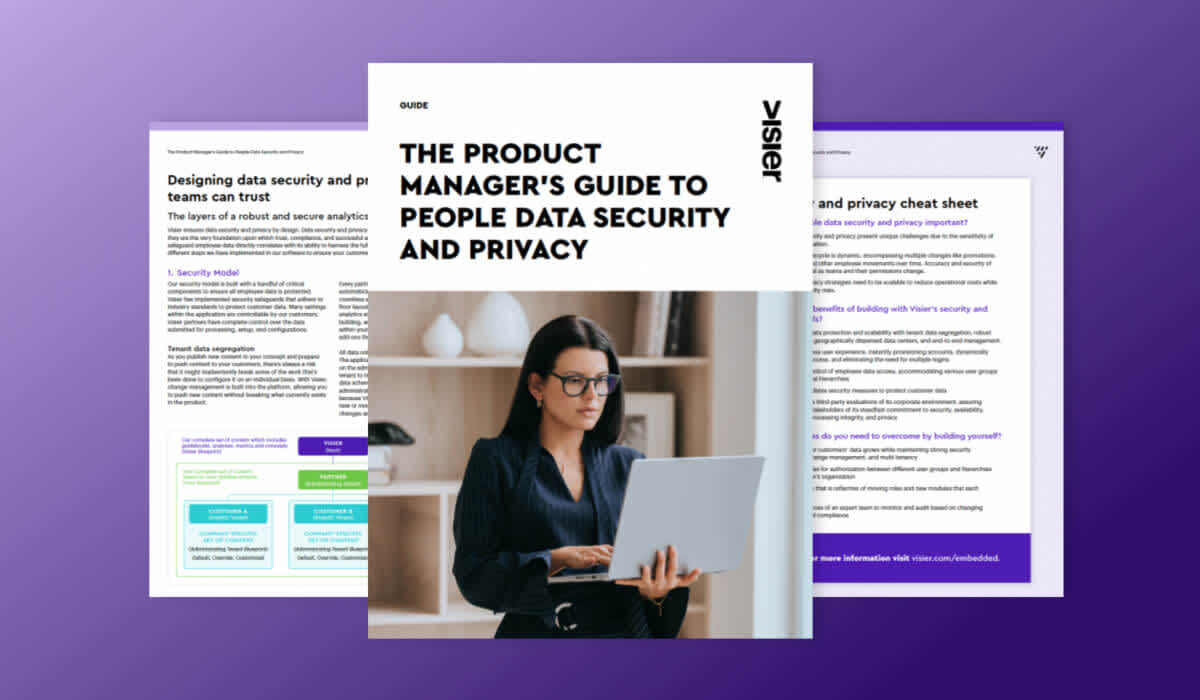How To Make Your Product Stickier With GenAI
Increasing product stickiness requires showing value early and often. Here are three ways incorporating generative AI in your product can make your product stickier—faster.

Software success hinges on product stickiness. The game isn’t won once you’ve sold your product. If it remains unused or under-used, it can be first on the chopping block. Increasing product stickiness requires showing value early and often.
When customers experience value from a product, they’re more likely to stick with it and you’ll benefit from increased revenue opportunities, decreased churn, and greater growth opportunities.
Generative AI has massive potential to increase product stickiness. Read on to learn how genAI can create highly habit-forming analysis journeys, help users realize value from your product faster, and help you scale your impact.

The challenges of product stickiness
Acquiring staffing and HR SaaS customers is expensive—about $410 for an SMB customer and up to $6,754 for an enterprise customer, according to FirstPageSage. If customers aren’t renewing and expanding their contracts, you’re missing out on the revenue potential of that acquisition cost.
So the advice is simple: Sell more to your existing customers. If you’ve got a great product, it should be easy. But analytics is hard. Customers need to know how to use your product to get the value out of it. If data paralysis, confusion, and frustration get in the way of insights customers will bounce.
Achieving widespread use and product stickiness requires appealing to all kinds of users, not just experienced data analysts. GenAI flattens the learning curve, eliminates barriers to entry, and makes insights available to everyone—instantly. Even the most user-friendly analytics pale in comparison to the easy question-and-answer conversations that embedding genAI in analytics makes possible.
3 ways genAI gets users to the “Aha! moment” faster
When a product surprises and delights, solves a problem, and demonstrates its value—that’s the "Aha! moment." For HR or people analytics users, it could be the moment when they understand why turnover is happening on their team or they nail down a plan to hire and onboard new employees, using data as their guide.
It’s a powerful moment—getting users there immediately is the key to driving stickiness. A product that shows its value quickly can become the bedrock of decision-making throughout the organization, and from there, it’s indispensable.
GenAI helps you get there faster by overcoming friction, reaching more audiences, and automating the everyday.
Overcoming friction: GenAI lets you skip over steep learning curves, low data literacy, and workflow inertia to communicate insights instantly. Users ask a question, get answer, and repeat as needed.
Reaching more audiences: With genAI, analysis and insights move beyond the designated people analytics team to include HR and executive leadership teams, first-line people leaders, and eventually, all employees.
Automating the everyday: GenAI transforms the people analytics practice by automating routine reporting, basic dashboards, and simple ad hoc requests and allowing users to self-serve and explore.

The race to deliver genAI is on
Gartner estimates that by 2026, over 80% of independent software vendors will have embedded genAI capabilities, up from less than 5% today. That means there’s a narrow window between from ahead of the curve and behind the pack.
Meanwhile, Gartner predicts that by 2028, more than half of enterprises that have built their own large language models will abandon the projects due to costs, complexity, and technical debt in their deployments.
And the costs and complexity are substantial. For those who construct foundation models from scratch, a category McKinsey calls the “makers,” costs will run from $50 million to $200 million. For the “shapers,” those who adapt existing large language models (LLMs) to their specific use cases, McKinsey predicts costs of $2 million to $10 million. But for “takers,” who use pre-built genAI apps, McKinsey estimates costs at $0.5 million to $2 million.
So you don’t need to have $50 million, or even $10 million, to spend on genAI in the next two years to stay ahead of the curve and deliver the aha! moments that keep users coming back. Embedding prebuilt apps can get you to the finish line faster.
Unlock your shortcut to genAI in your product
Visier has a purpose-built data model, the HR domain experience, and the scale of HR data required to answer almost any workforce question. Now, the same underlying technology used to power Vee, the generative AI digitial assistant used by Visier's enterprise customers, is available to embed inside your product.
You’ll be able to deliver insights at the speed of thought, backed by Visier’s security and accuracy in a record time-to-market and without a massive investment of time and resources.
Embedding HR-specific genAI from Visier lets you skip the lengthy and expensive development curve and start offering sticky analytics to your customers faster. To learn more, visit Vee for Partners.

Embedded people analytics
Software vendors that have embraced GenAI in their HR technology offerings are reaping the revenue rewards. Here’s how you can catch up—fast.
GenAI can be used throughout the employee lifecycle to increase productivity and support strategic workforce planning. Get the scoop.
Embedded analytics are analytics capabilities that are integrated within another application—and the value goes far beyond just convenience. Here's what you need to know.
Contextual analytics delivers answers directly in the platforms people already use, bringing data and insights into the ways they already work. Learn how to combine the power of contextual and embedded analytics here.


